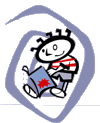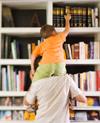 |
 |
 |


|
There is a moment, unperceived, when a normal child becomes
a child who is overwhelmed by anger. The parents are usually
unaware of this subtle change. Whether the root of the anger
is in tangible causes, such as sibling rivalry, a change in
lifestyle such as divorce, or some other disrupting or
hurtful social situation, many parents – the authors
contend– do not know how to handle their angry children in
the right way. Tim Murphy, a child psychologist who has
appeared on television and on radio and written many
articles - does not believe that all angry children become
angry adults, but he notes in this his first book that many
parents simply give in to the tantrums of an angry child or
indulge in other inadequate responses – crumbling and giving
in, ignoring the child, retaliating in anger– this often
leads to a society full of angry manipulative adults.
Dr. Murphy’s book aims to show the causes of much childhood
anger and also describes ways in which the anger can be
truly and deeply healed. For Murphy, there is a big
difference between relief from the hurt of anger and true
resolution.
The Angry Child is authoritative without sounding too
academic. It’s readable book with clear, meaningful advice
and many anecdotal case histories to help parents diagnose
and respond to children wading through the morass of anger,
bitterness, and resentment.
The two co-authors begin the book by showing the four stages
of anger: The buildup stage, which is the foundation and
font of memories upon which the anger will rest – incidents
such as divorces, family deaths, sibling rivalries etc. The
spark comes next. This is perhaps one of the Murphy notes
that the parent who knows when to recognize what sparks her
child’s anger might learn be able to use a few strategies
such as “time-outs,” “listening,” “teaching their child to
label their correct feelings,” etc. Stage three is the stage
that gets the most attention: the explosion (which could be
anything from a shout, a tantrum, a nasty comment, attempts
at manipulation, or breaking things) and at last stage four,
the most overlooked stage: the aftermath. The aftermath
either leaves healing or woundedness, lessons learned or
suspicions affirmed. In all these sections, Murphy includes
case histories and strategies for helping children and their
parents.
In further chapters, he speaks about the ten characteristics
of the angry child. These characteristics show social
behavior, non-verbal language and its many components such
as tone of voice, personal space, inappropriate facial
expressions, mental confusion, psychological games. He
includes in his discussion suggestions on how technology and
the media affect anger and how illnesses such as Attention
Deficit Disorder also combine to create or perpetuate anger
in a child. The suggestions on how to monitor the media and
how to teach children to examine the media is especially
handy for helping children learn to view the world and
themselves critically. The many behavioral, psychological
and educational therapies in this book are all very helpful,
especially the sections on training adolescents and the
section on children of divorce (although he doesn’t really
do any in-depth discussion on how parents can work with or
against the educational system to help an angry child in
school), and the authors certainly feel that while therapy
might be needed in some cases, the average parent can learn
the tools to help her child learn to recognize how to deal
with anger in an appropriate and healing way.
The book is an easy read. And the older teen might even read
it himself. This excellent book is highly recommended.
|







|
| |
Carole McDonnell/2005 for curled up with a good kid's book |
|
|
For grown-up fiction, nonfiction and speculative fiction book reviews,
visit our sister site Curled Up With a Good Book (www.curledup.com)
|
|